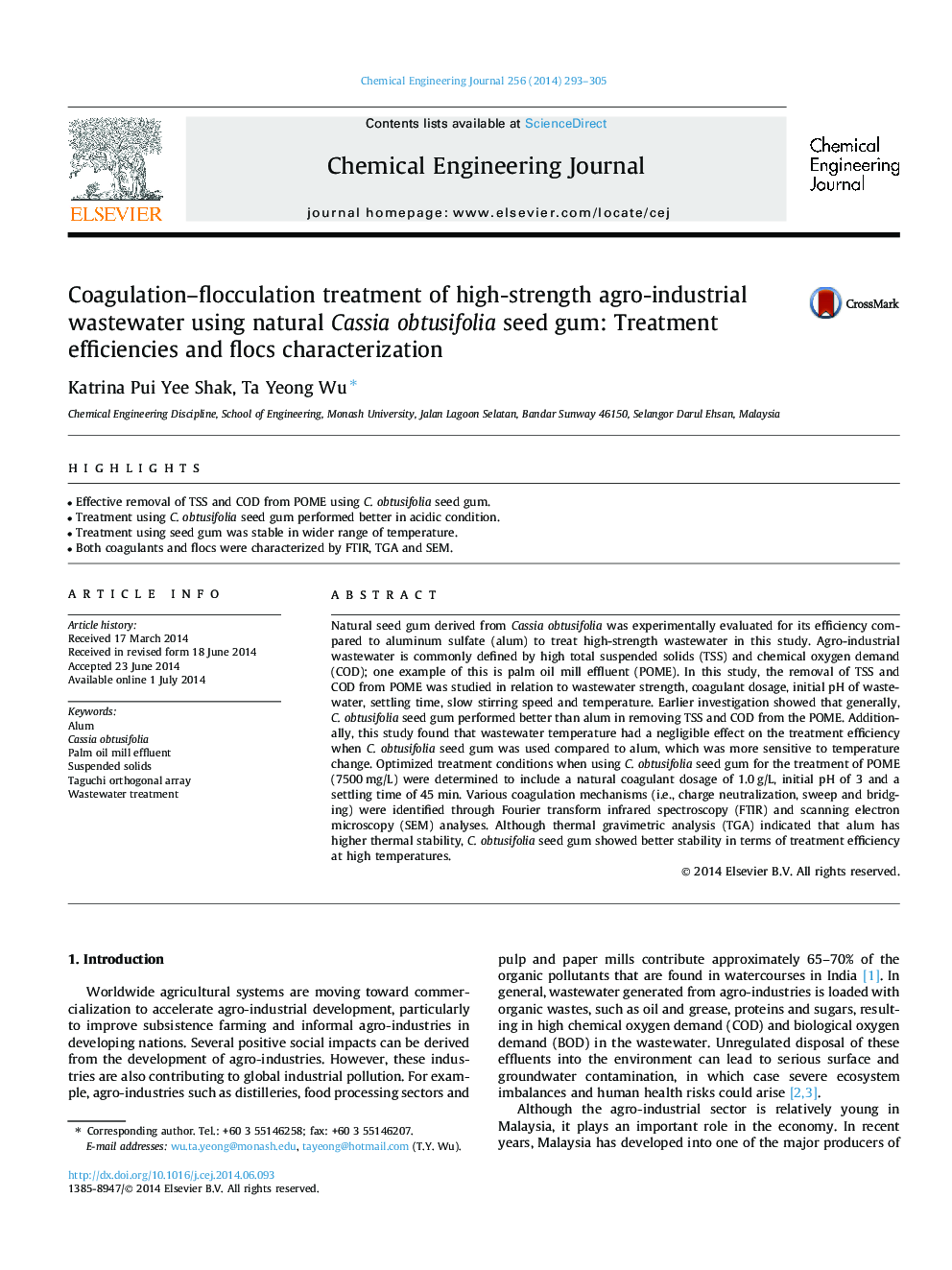| Article ID | Journal | Published Year | Pages | File Type |
|---|---|---|---|---|
| 147008 | Chemical Engineering Journal | 2014 | 13 Pages |
•Effective removal of TSS and COD from POME using C. obtusifolia seed gum.•Treatment using C. obtusifolia seed gum performed better in acidic condition.•Treatment using seed gum was stable in wider range of temperature.•Both coagulants and flocs were characterized by FTIR, TGA and SEM.
Natural seed gum derived from Cassia obtusifolia was experimentally evaluated for its efficiency compared to aluminum sulfate (alum) to treat high-strength wastewater in this study. Agro-industrial wastewater is commonly defined by high total suspended solids (TSS) and chemical oxygen demand (COD); one example of this is palm oil mill effluent (POME). In this study, the removal of TSS and COD from POME was studied in relation to wastewater strength, coagulant dosage, initial pH of wastewater, settling time, slow stirring speed and temperature. Earlier investigation showed that generally, C. obtusifolia seed gum performed better than alum in removing TSS and COD from the POME. Additionally, this study found that wastewater temperature had a negligible effect on the treatment efficiency when C. obtusifolia seed gum was used compared to alum, which was more sensitive to temperature change. Optimized treatment conditions when using C. obtusifolia seed gum for the treatment of POME (7500 mg/L) were determined to include a natural coagulant dosage of 1.0 g/L, initial pH of 3 and a settling time of 45 min. Various coagulation mechanisms (i.e., charge neutralization, sweep and bridging) were identified through Fourier transform infrared spectroscopy (FTIR) and scanning electron microscopy (SEM) analyses. Although thermal gravimetric analysis (TGA) indicated that alum has higher thermal stability, C. obtusifolia seed gum showed better stability in terms of treatment efficiency at high temperatures.
